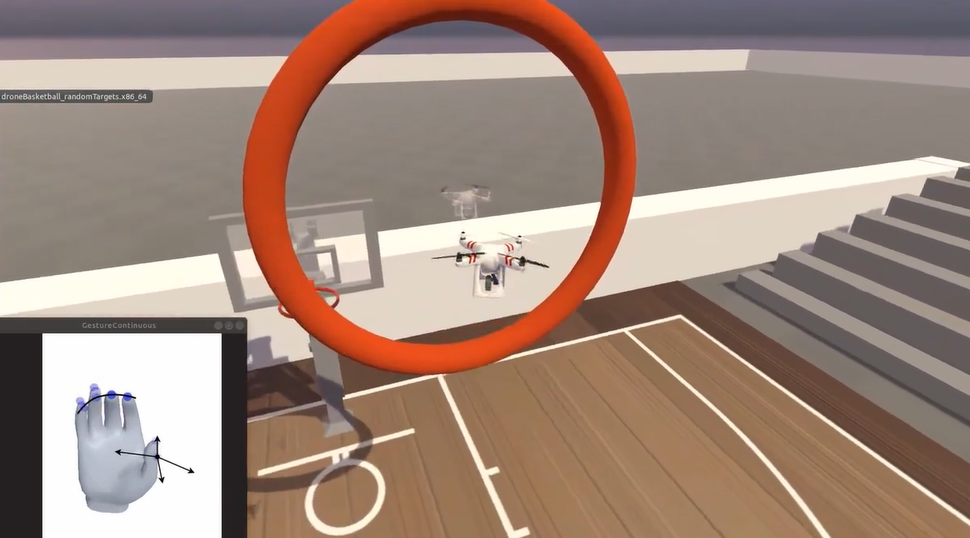Brain-computer interface allows paralysed person to play video game
A multidisciplinary team of researchers in the United States has implanted a paralysed person with a brain-computer interface capable of detecting and decoding finger movements. The system achieved a degree of accuracy that allowed him to play a video game. The results are published in the journal Nature Medicine.

Using the finger intracortical brain-computer interface translated to quadcopter control to navigate through randomly appearing rings to demonstrate spontaneous, free-form control. Credit: Willsey et al.
Eduardo Fernández - videojuego BCI EN
Eduardo Fernández
Director of the Institute of Bioengineering at the Miguel Hernandez University of Elche and director of the Biomedical Neuroengineering group at the Center for Biomedical Research Network on Bioengineering, Biomaterials and Nanomedicine (CIBER-BBN)
Francis R. Willett and Jaimie M. Henderson at Stanford University are conducting cutting-edge research in the field of brain-computer interfaces (BCI) in humans, with the aim of restoring communication and mobility in people with paralysis. Its focus is on developing technologies that can significantly improve the quality of life of these patients and is a clear example of how multidisciplinary research can help to better understand how the brain controls movement and, with this information, be able to design novel clinical systems that can help improve the quality of life of people with paralysis.
This study suggests that the needs of people with paralysis go beyond simple physical mobility. Social and leisure dimensions are also important for well-being, although this involves addressing additional technical challenges, such as decoding intentions continuously and improving control of complex interfaces, such as video games, which require multifactorial control.
The study is well designed and of high quality. It was conducted in a person with cervical spinal cord injury (C4) and near-total loss of motor function in both upper and lower extremities. The researchers implanted a total of 192 electrodes (two arrays of 96 electrodes) in his left cerebral hemisphere, specifically in the part of the brain that is crucial for the control of hand and finger movements, especially fine and precise movements. From recordings of brain activity from neurons near these electrodes, they were able to continuously decode the intentions of finger movements, overcoming some of the limitations of previous studies.
The study presents a significant advance in the field of BCI by achieving continuous decoding of finger movements with a high degree of freedom. The demonstration of control of a virtual quadcopter represents an important step towards creating more intuitive and functional interfaces for people with paralysis. It highlights the importance of individualised finger control as an intermediate representation between neural activity and computational interfaces, similar to how able-bodied people use their fingers to interact with keyboards and video game controllers. This technology offers an intuitive framework for the development of brain-controlled digital interfaces, opening up new possibilities for entertainment and socialisation.
However, it should be noted that this research has been conducted on a single patient, so further studies are still needed. In addition, the information flow is still unidirectional (from the brain to the device) and does not include sensory feedback (the information the brain receives from the fingers), which may make it difficult or limit the control of more complex interfaces.
The future is bright and we must be ready to be able to use these new technologies to improve the quality of life of patients with spinal cord injuries. Further progress in these lines of research is needed to create technologies that can decipher the ‘language’ of the brain and are able to read and modify brain activity in real time. At the same time, it is important to begin to consider the potential ethical, legal and social issues that may arise as these new technologies are incorporated into medical practice.
Willsey et al.
- Research article
- Peer reviewed
- People



